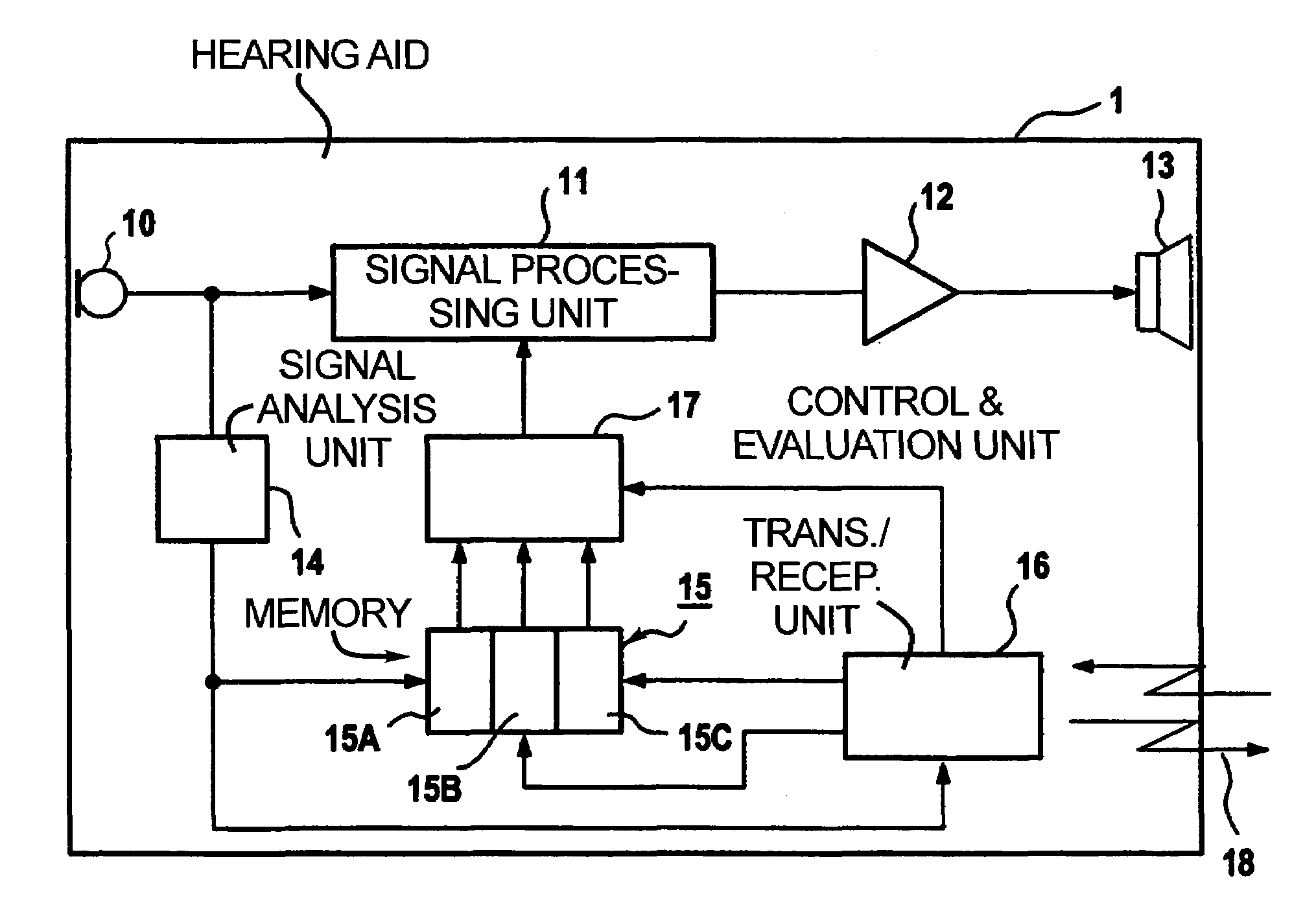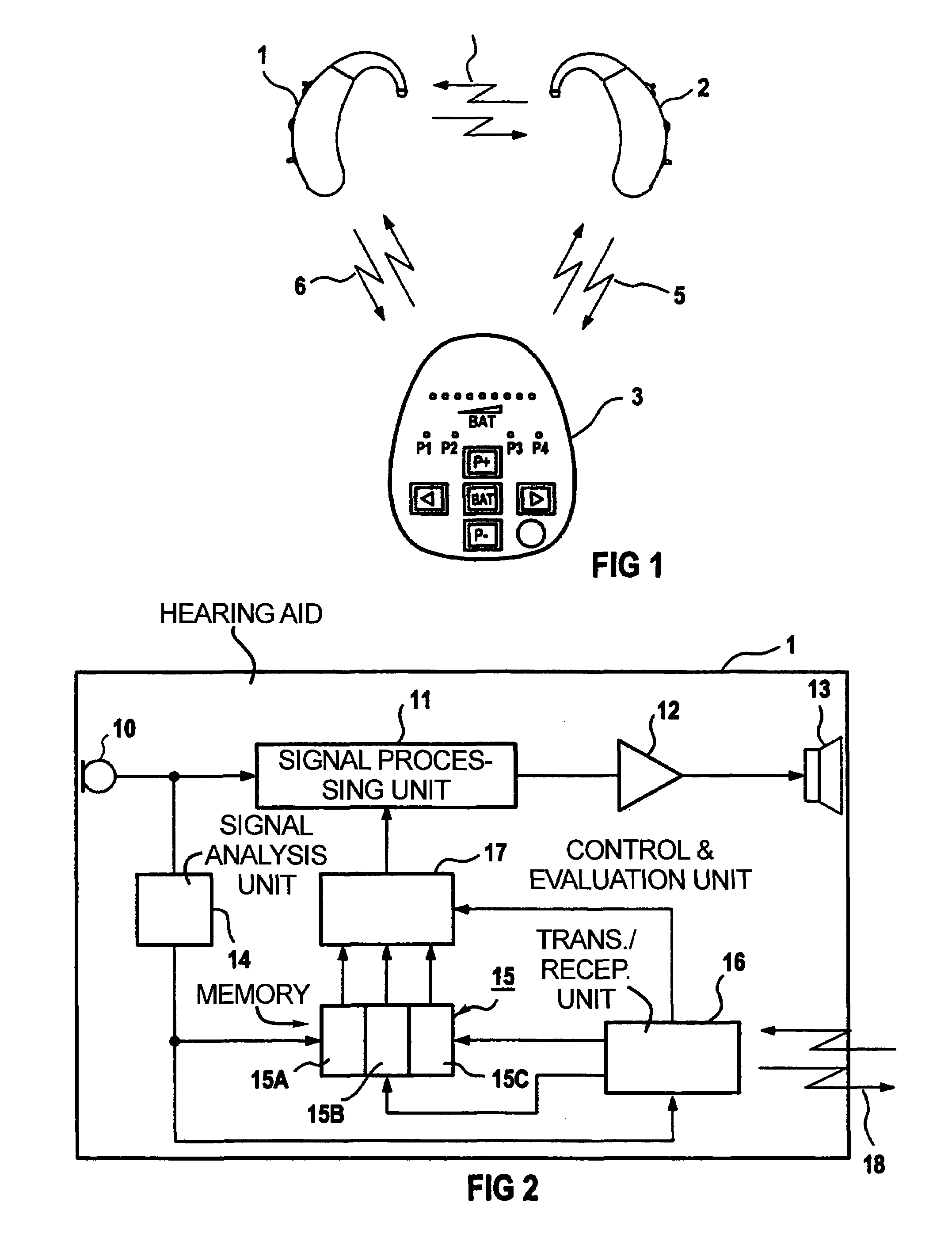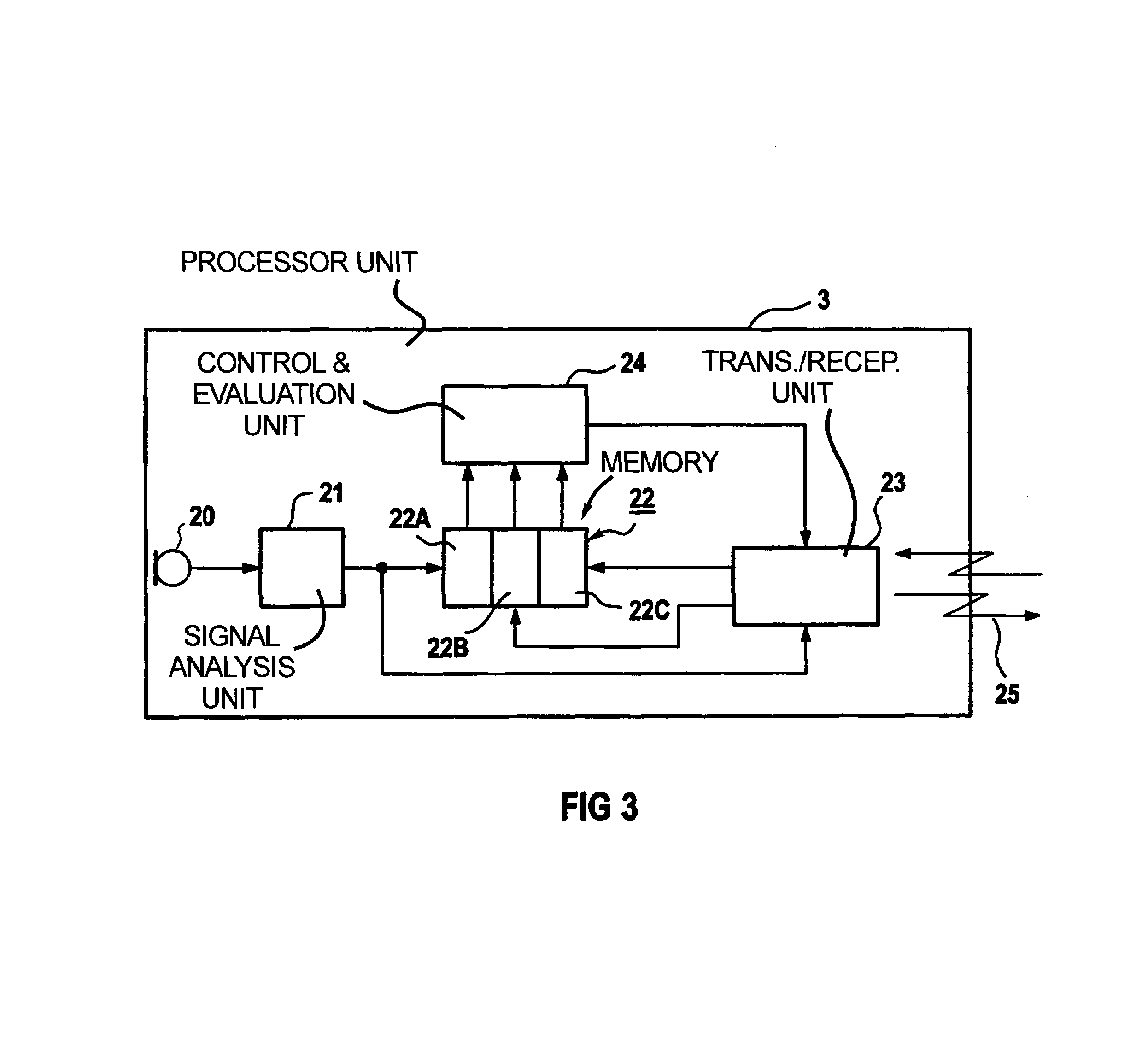Method for operating a hearing aid system and hearing aid system
a hearing aid and system technology, applied in the direction of deaf-aid sets, electric devices, etc., can solve the problems of large number of data transmitted between the two hearing aids, slight divergence, and inability to correctly recognize the momentary hearing situation
- Summary
- Abstract
- Description
- Claims
- Application Information
AI Technical Summary
Benefits of technology
Problems solved by technology
Method used
Image
Examples
Embodiment Construction
[0032]As an exemplary embodiment, FIG. 1 shows the structure of a binaural hearing aid system with two hearing aids 1 and 2 and an external processor unit 3. Signal paths 4, 5 and 6, which are bidirectionally and wirelessly implemented in the exemplary embodiment, are present between the two hearing aids 1 and 2 and between each hearing aid 1 and 2 and the external processor unit 3. Data thus can be exchanged between the hearing aids 1 and 2 as well as between each hearing aid 1 and 2 and the external processor unit 3 within the hearing aid system.
[0033]FIG. 2 schematically illustrates the internal structure of a hearing aid 1 of the hearing aid system 1, 2, 3 according to FIG. 1. The hearing aid 1 has a directional microphone 10 with variable directional characteristic for picking up an acoustic input signal. This is supplied to a signal-processing unit 11 in which an editing of the input signal for matching to the hearing loss of the hearing aid user ensues. The output signal of t...
PUM
 Login to View More
Login to View More Abstract
Description
Claims
Application Information
 Login to View More
Login to View More - Generate Ideas
- Intellectual Property
- Life Sciences
- Materials
- Tech Scout
- Unparalleled Data Quality
- Higher Quality Content
- 60% Fewer Hallucinations
Browse by: Latest US Patents, China's latest patents, Technical Efficacy Thesaurus, Application Domain, Technology Topic, Popular Technical Reports.
© 2025 PatSnap. All rights reserved.Legal|Privacy policy|Modern Slavery Act Transparency Statement|Sitemap|About US| Contact US: help@patsnap.com



